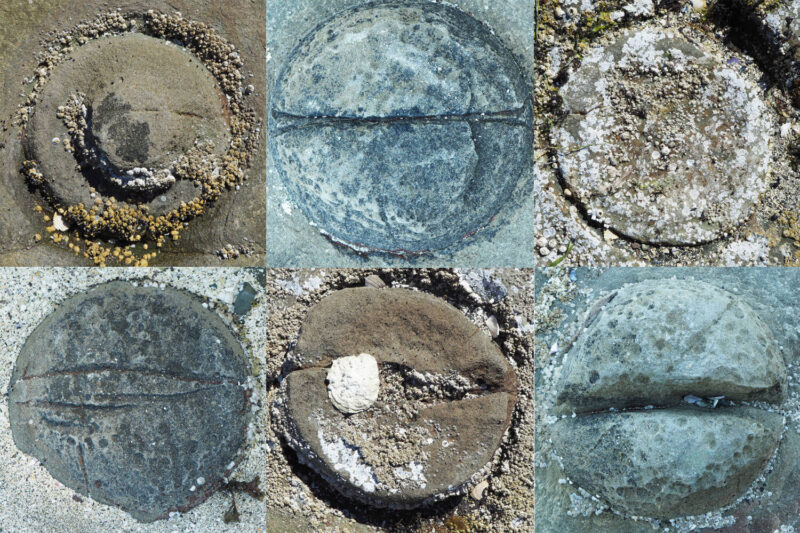Beach-goers who take a stroll along the water’s edge of Yellow Point, Gabriola Island and Sayshutsun, near Nanaimo on Vancouver Island, are almost sure to encounter rock circles in the sandstone shorelines.
Spherical rock formations called concretions, sometimes referred to as cannonballs, are commonly found where wave and weather erosion has worn away debris and the sandstone itself, revealing the formations that rise above the layer of sandstone bedrock.
Concretions are similarly shaped, but each has its distinct cracks and other scars from weather wear and geologic processes, augmented by sea life and ocean debris that form around them, making each appear to have been uniquely crafted by nature as an abstract stone sculpture.
They’re one of the oldest geological features people come across in the region. Shoreline concretions in the Yellow Point area formed in the sandstone from 85 to 65 million years ago, according to Jerome-Etienne Lesemann, professor at Vancouver Island University’s Earth Science department.
“There are various units of sandstone in the region and they’re all part of a broader package of sedimentary rock that we call the Nanaimo Group,” Lesemann says. “There’s many kilometres of sedimentary rock that are part of the Nanaimo Group and within that there are some distinct units of sandstone. You have some in the big tall cliffs on Gabriola. That’s one example. (At) Yellow Point there’s a whole bunch of sandstone. (Saysutshun) is another place where there’s lots of sandstone. Those big concretions are preferentially formed within those sandstone beds.”
Concretions form within and from the sandstone itself when sand grains cluster around something that creates a nucleus, such as a small fossil, piece of organic debris or even a clump of coarser sand grains, Lesemann explains.
“In the spaces between the sand grains there are fluids that can circulate,” Lesemann says. “There’s water and that water can contain all kinds of different dissolved chemical elements.”
Minerals diffused in the water mix with the sand grains to effectively form a ‘glue’ or cement – hence the name concretions – in the spaces between the sand grains.
“It’s that cement that’s going to create this localized hardening of the sandstone … so early in the process of transforming the sand into sandstone, most likely, is when the beginning of the creation of these concretions happens,” Lesemann says. “It starts fairly early in the process and then, over time – we’re talking probably into the hundreds of thousands to millions of years – we convert or transform the sand into sandstone and these concretions have already been initiated. They’re there.”
The mineral acting as the binding agent is often calcite (calcium carbonate) or in some cases an iron oxide present in groundwater. The even diffusion of the mineral creates the concretions’ spherical shapes. Erosion over thousands of years wears away the softer sandstone around the hard concretions more quickly, leaving them protruding above the sandstone layer. Concretions vary in colour due to the effects of weather exposure and of the type of binding mineral.
Lesemann says concretions are common in sandstone deposits with similar characteristics to the Nanaimo Group, but only become visible where geological forces and erosion reveal them.
Concretions also appear in cliffs around the region. One large specimen commuters see driving to work on the Island Highway to Nicol Street in south Nanaimo has a crack resembling a mouth, and an artist painted it black and white to create the face of an orca peering out of the cliff side.
Plan your adventures throughout the West Coast at westcoasttraveller.com and follow us on Facebook and Instagram @thewestcoasttraveller. And for the top West Coast Travel stories of the week delivered right to your inbox, sign up for our weekly Armchair Traveller newsletter!











 Famed Dawson City drink hits milestone birthday
Famed Dawson City drink hits milestone birthday